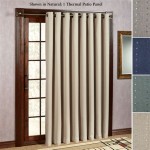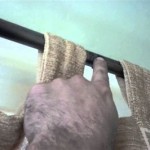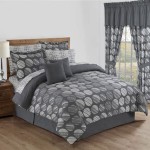The Best Steamer for Curtains and Clothes: A Comprehensive Guide
The market offers a plethora of garment steamers, each promising to remove wrinkles and refresh fabrics with ease. Selecting the "best" steamer, however, depends on individual needs, budget, and the specific materials requiring treatment. This article will explore key features, types, and considerations when choosing a steamer for both curtains and clothes, enabling informed purchasing decisions.
Steamers offer a gentler alternative to traditional ironing, particularly beneficial for delicate fabrics like silk, lace, and rayon. They also excel at refreshing items that are difficult to iron, such as pleated skirts, garments with embellishments, and large items like curtains. Unlike ironing, which directly presses fabric fibers, steam relaxes these fibers, releasing wrinkles without the risk of scorching or creating unwanted creases.
The use of steam also provides hygienic benefits. The high temperature of steam can kill bacteria and dust mites, making it a valuable tool for refreshing clothing and linens, especially those that cannot be easily washed. This is particularly useful for items like suit jackets, wool coats, and upholstery.
Understanding Steamer Types: Handheld vs. Upright
The most fundamental distinction among garment steamers lies in their design: handheld and upright. Each type possesses distinct advantages and disadvantages, making them suitable for different applications.
Handheld steamers are compact, lightweight, and highly portable. Their small size makes them ideal for travel, quick touch-ups, and steaming small areas. They typically have a smaller water tank, resulting in a shorter steaming time before needing refilling. Their convenience and affordability make them a popular choice for individuals with limited storage space or those who only need to steam occasionally. However, the smaller water tank can be a limitation for larger tasks like steaming curtains.
Upright steamers, conversely, are larger and more powerful. They feature a larger water tank, providing extended steaming time. They typically include a hose and a nozzle attached to a stand, allowing for more comfortable and sustained steaming sessions. Upright steamers are better suited for larger tasks like steaming curtains, multiple garments, or handling bulkier fabrics. The drawback is their larger size, requiring more storage space, and their higher price point.
Some newer models blur the line between these two categories, offering features like detachable water tanks and adjustable poles, thus providing some of the benefits of both handheld and upright designs.
Key Features to Consider
Beyond the basic type, several features contribute to the effectiveness and user-friendliness of a garment steamer. These include steam output, heat-up time, water tank capacity, attachments, and safety features.
Steam output is measured in grams per minute (g/min) and directly affects the steamer's ability to remove wrinkles. A higher steam output generally indicates more powerful wrinkle removal. For delicate fabrics, a lower steam output might be preferable to prevent damage. For heavier fabrics like denim or linen, a higher steam output is necessary to effectively relax the fibers.
Heat-up time is the time it takes for the steamer to heat the water and produce steam. A faster heat-up time can be a significant convenience, especially when time is limited. Some steamers can heat up in as little as 30 seconds, while others require several minutes.
Water tank capacity dictates how long the steamer can operate before needing a refill. A larger tank is advantageous for steaming multiple items or large surfaces like curtains. However, a larger tank also adds to the steamer's weight and size. Consider the typical steaming needs when selecting a steamer with an appropriate water tank capacity.
Attachments can enhance the steamer's versatility. Brush attachments are useful for removing lint and pet hair, while fabric guards protect delicate materials from direct heat. Crease attachments can help create sharp, defined creases on trousers and shirts. The availability of these attachments can significantly improve the steamer's overall performance.
Safety features are paramount. Auto shut-off is a critical feature that automatically turns off the steamer when the water tank is empty or when the unit overheats. This prevents damage to the steamer and mitigates the risk of fire. Look for steamers with insulated hoses and handles to avoid burns during operation.
Another consideration is the type of water that can be used in the steamer. Some steamers require distilled water to prevent mineral buildup and prolong the unit's lifespan. Others can tolerate tap water, but may require periodic descaling to remove mineral deposits. Check the manufacturer's instructions for specific water requirements.
Steaming Curtains Effectively
Steaming curtains presents a unique set of challenges compared to steaming clothes. Curtains are often large, heavy, and difficult to maneuver. Choosing the right steamer and employing proper techniques is crucial for achieving satisfactory results.
An upright steamer is generally recommended for steaming curtains due to its larger water tank and longer hose. This allows for sustained steaming without frequent refills and provides greater reach. A handheld steamer can be used for touch-ups or for smaller curtains, but an upright model is more efficient for larger tasks.
Before steaming, ensure the curtains are clean and free of dust or debris. Vacuuming or dusting the curtains prior to steaming will prevent the steamer from pushing dirt further into the fabric. It's also advisable to test the steamer on an inconspicuous area of the curtain to ensure the fabric is colorfast and not prone to watermarks.
Start steaming from the top of the curtain, working downwards in overlapping strokes. Hold the steamer nozzle close to the fabric, but avoid direct contact, especially with delicate materials. Use a slow, steady motion to allow the steam to penetrate the fabric and relax the wrinkles. For stubborn wrinkles, apply more steam to the affected area.
After steaming, allow the curtains to air dry completely. Avoid pulling or stretching the fabric while it is still damp, as this can distort the shape. Opening windows can help speed up the drying process. Once the curtains are dry, they should be smooth and wrinkle-free.
Some curtains may require multiple steaming sessions to achieve the desired results. This is particularly true for thick or heavily wrinkled fabrics. Be patient and persistent, and avoid over-saturating the fabric with steam.
For curtains with pleats or folds, use a crease attachment to define the shape and create sharp lines. This will give the curtains a more polished and professional look.
Regularly steaming curtains can help keep them looking fresh and clean, reducing the need for frequent dry cleaning or laundering. It also helps to eliminate odors and allergens, creating a healthier indoor environment.
Ultimately, the best steamer for curtains and clothes is one that meets individual needs and preferences. By carefully considering the factors outlined in this article, consumers can make an informed decision and choose a steamer that will provide years of reliable service.
While the market is ever-evolving, focusing on steam output, tank capacity, appropriate attachments, and safety features remains core to selecting a suitable product. Understanding the differences between handheld and upright models, and how these relate to specific steaming tasks, will also contribute to a successful purchase.

Choosing The Right Steamer For Curtain Cleaning Fortador

The 3 Best Clothing Steamers Of 2025 Reviews By Wirecutter

6 Best Clothes Steamers Of 2025 Tested And Reviewed

8 Best Clothes Steamers 2025 The Strategist

Best Curtain Steamer For Any Types Of Fabric Top 7 Steamers Curtains And Clothes

The 3 Best Clothing Steamers Of 2025 Reviews By Wirecutter

8 Best Clothes Steamers 2025 Reviewed
The 3 Best Clothes Steamers Tested And Reviewed

Hamilton Beach Handheld Garment Steamer For Clothes Bedding Curtains Traveling 1000 W Steam Pump

8 Best Clothes Steamers 2025 Reviewed








